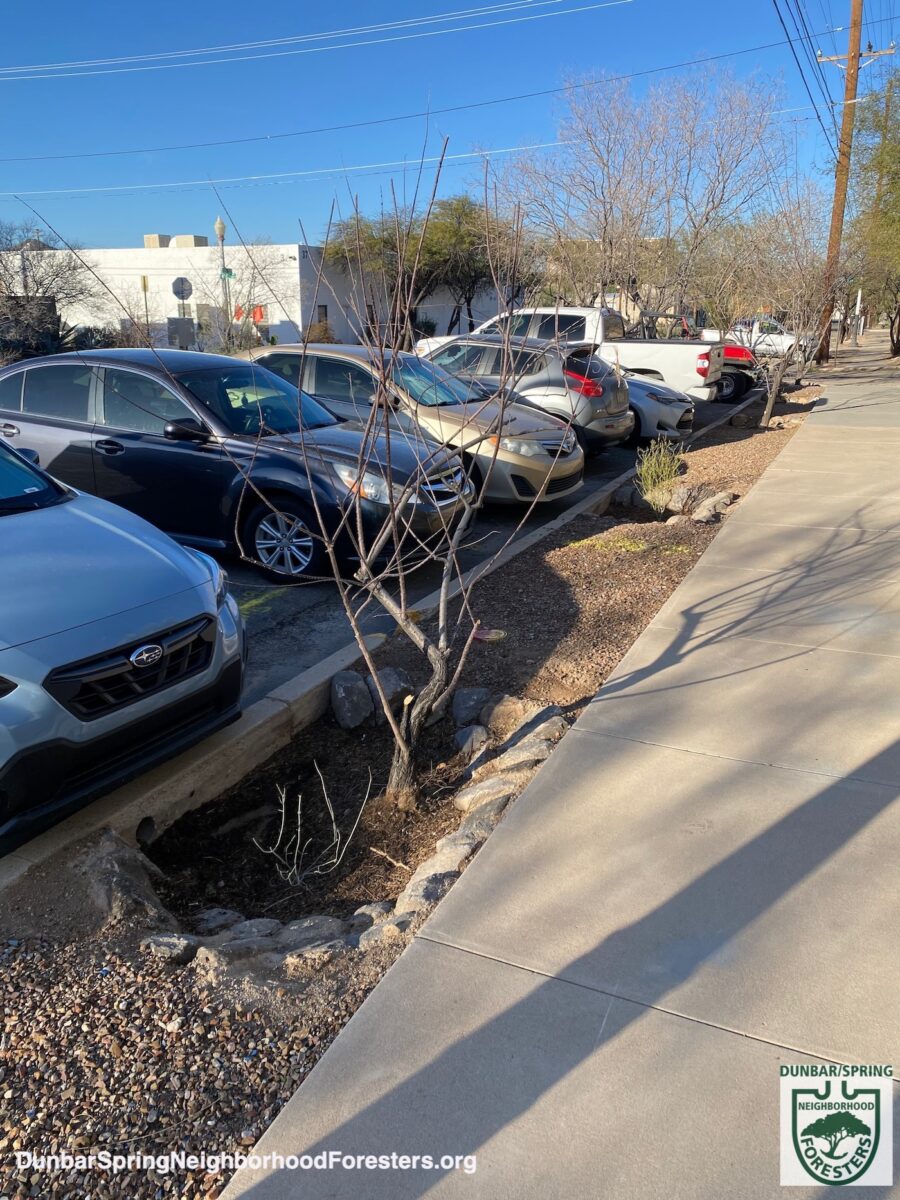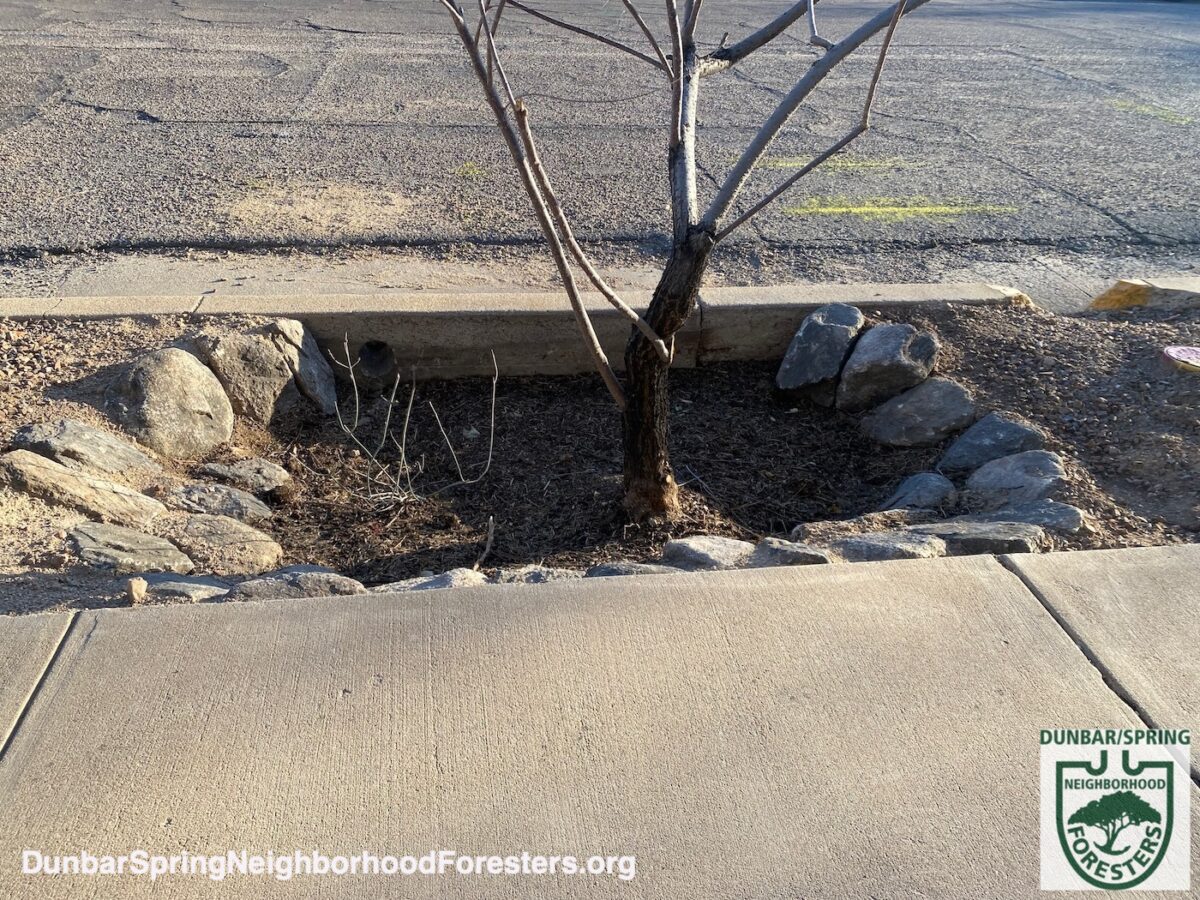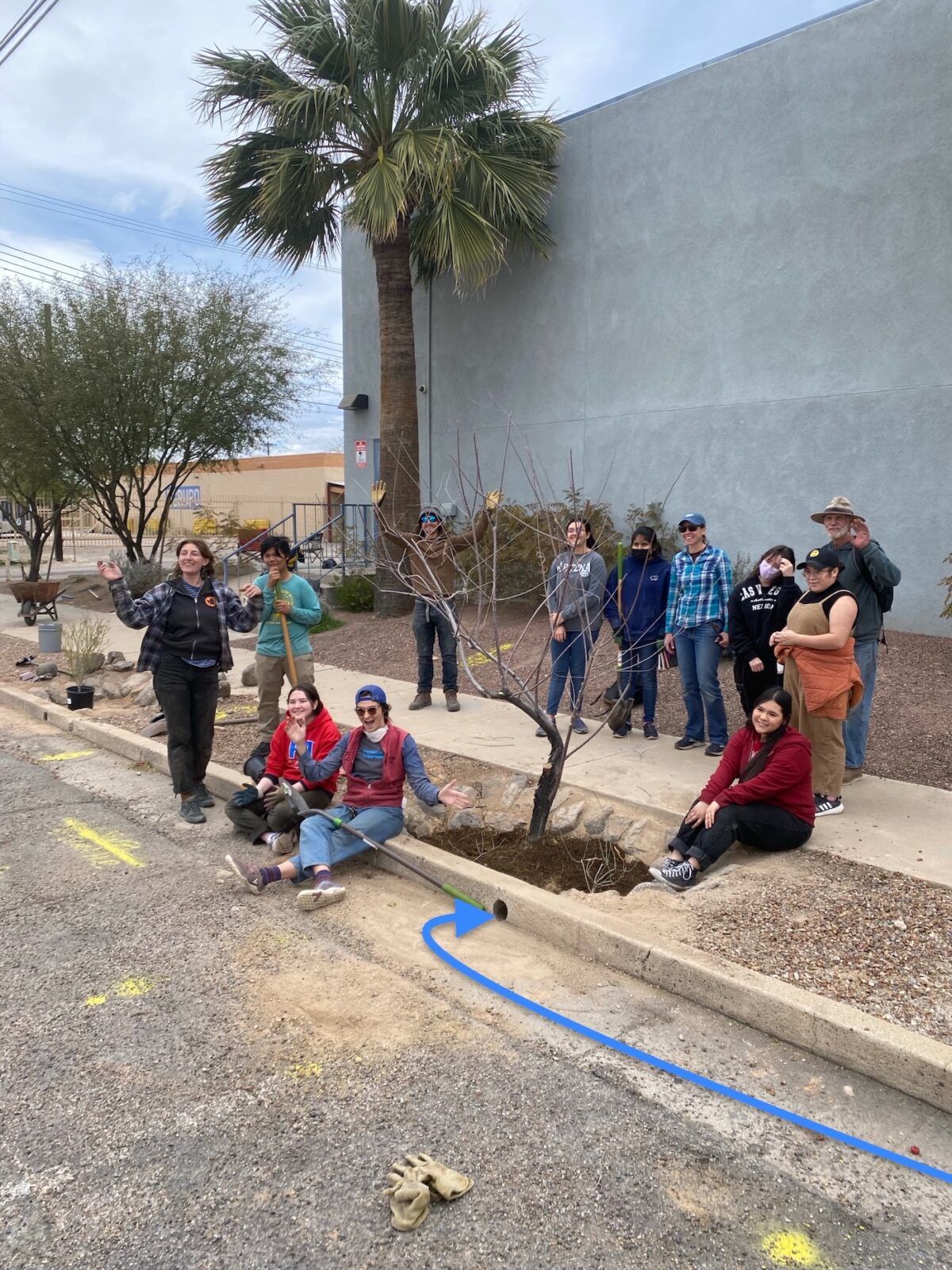The Dunbar Spring Neighborhood Foresters teamed up with youth volunteers from Ironwood Tree Experience this February to rehabilitate and renew street-runoff harvesting basins that had been built in 2010 (by contractors funded by a Neighborhood Reinvestment grant) without adequate bank stabilization, resulting in the basin banks eroding into, and filling, the basins to the point they no longer accepted stormwater.

Basin inlets are silted in, and won’t accept street runoff.
Photo: Brad Lancaster

Silt has been removed, and banks are being stabilized with repurposed rock.
Photo: Brad Lancaster

Photo: Brad Lancaster
The Dunbar Spring Neighborhood Foresters taught and guided the youth volunteers, who did amazing work in digging out the basins to their original depths and widths, and then stabilizing their banks with rock removed and repurposed from 2010-era chicanes in the neighborhood that had been mistakenly built with rocked basin bottoms (their basin bottoms are now rock-free so they can harvest and infiltrate more water).

Basin inlets are silted in, and won’t accept street runoff.
Photo: Brad Lancaster

Silt has been removed, and banks are being stabilized with repurposed rock.
Photo: Brad Lancaster

Basins can once again harvest street runoff.
Photo: Brad Lancaster
Before doing the work, we had bluestake mark all underground utilities (call 811), got the permission of the adjoining landowner Cirrus Visual, and volunteers from neighbor El Grupo Youth Cycling agreed to water the new plantings (replacing those that had died out) to get the plants established (establishment watering is usually watering the plants well at least once per week until the next winter rainy season. This way the new plantings can grow an extensive root network before having to fend for themselves. Once established, the plantings will make it on passively harvested stormwater alone.

Photo: Brad Lancaster

Photo: Brad Lancaster

This basin now also has a newly planted chuparosa bush (that grows edible flowers).
Photo: Brad Lancaster
Ideally, the basins would be much larger, but in this location, the basins were made as large as they could within the constraints of limited space between sidewalk and street curb, and the need to maintain basin-less pathways from between the cars (that park perpendicular to the street curb) to the sidewalk. The roots of the trees will grow to extend to the adjoining basins.
The basins were mulched with composted goat pen bedding from a neighborhood goat pen. And the basins were seeded with native wildflowers and understory plant mix.
The existing trees were pruned of their dead wood (die back had occurred when their stormwater inlets got silted in, and their primary water source dried up), and we also pruned to regain full pedestrian access along the public pathways.
As temperatures warm up in spring the winter-deciduous plants will re-leaf, and with the harvested water they should thrive.
It is important that we keep evolving and improving our installations, and that we fix and rehabilitate them as needed.
This informs our evolution and enhances the health and capability of our installations and community.
For more info on how to do all this and more,
see the full-color edition of the books Rainwater Harvesting for Drylands and Beyond by Brad Lancaster, available at deep discount direct from Brad at www.HarvestingRainwater.com.
And check out more of the resources here at the DunbarSpringNeighborhoodForesters.org

